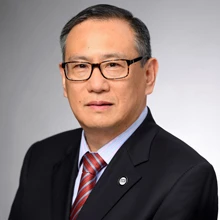At the World Bank, we look to lead by example to achieve our goals of ending extreme poverty and boosting shared prosperity in a sustainable way. This is a longstanding promise recently reconfirmed and reenergized by President Kim in October 2014.
And with the adoption of the Sustainable Development Goals (SDG) – 17 goals to be achieved by 2030 – we are linking our own corporate sustainability activities to many of the SDG indicators.
Consider for example SDG 12 which aims “to ensure sustainable consumption and production patterns”. For us this translates to several indicators: (1) measuring, managing, and offsetting greenhouse gas emissions stemming from Bank facilities and activities such as employee travel; (2) maximizing the efficiency of energy, water, food, paper and public goods such as landfills; (3) incorporating sustainability practices throughout our own supply chain
Our commitment to climate neutrality for our global operations also links to SDG 13 (take urgent action to combat climate change and its impacts). Last year, we reduced 5,000 metric tons of carbon dioxide equivalents (CO2e), which is comparable to taking 1,000 cars off the road. Efforts that were instrumental in reaching these results included relying less on diesel generators on a global level and adding energy-efficient upgrades to our 130 offices globally, as well as reducing our use of electricity at our headquarters in Washington D.C.
Employees have done their part to support corporate sustainability by personally donating to community organizations. The World Bank matched their donations, totaling $6.5 million in FY16. Our staff have also contributed in other ways: 72 percent of staff in DC chose low- and no-carbon footprint options for commuting such as cycling or carpooling in FY16, up from 52 percent in FY11.
Additional efforts that we can clearly link back to the SDGs include:
- Completing the Economic Dividends for Gender Equality (EDGE) certification process for the Washington, DC, location, achieving the initial level of “EDGE Assess.” The certification is effective for two years, during which time the Bank Group will complete work on an action plan to address the findings and progress to the second level, “EDGE Move,” as well as conduct the assessment in non-U.S. locations. Our Diversity & Inclusion efforts align with SDG 5 (achieve gender equality).
- The launch of the Open Learning Campus (OLC) where staff, global clients and partners can expand their knowledge on various topics. Opening up the doors to further education not only enriches our staff’s career development, but also puts the World Bank on an accelerated path to development solutions. This initiative contributes to the achievement of SDG 4 - ensure inclusive and equitable quality education and promote lifelong learning opportunities for all.
For more information I encourage you to take a look at our 2015 Sustainability Report, and update included in the 2016 Annual Report. (http://worldbank.org/corporateresponsibility).


Join the Conversation